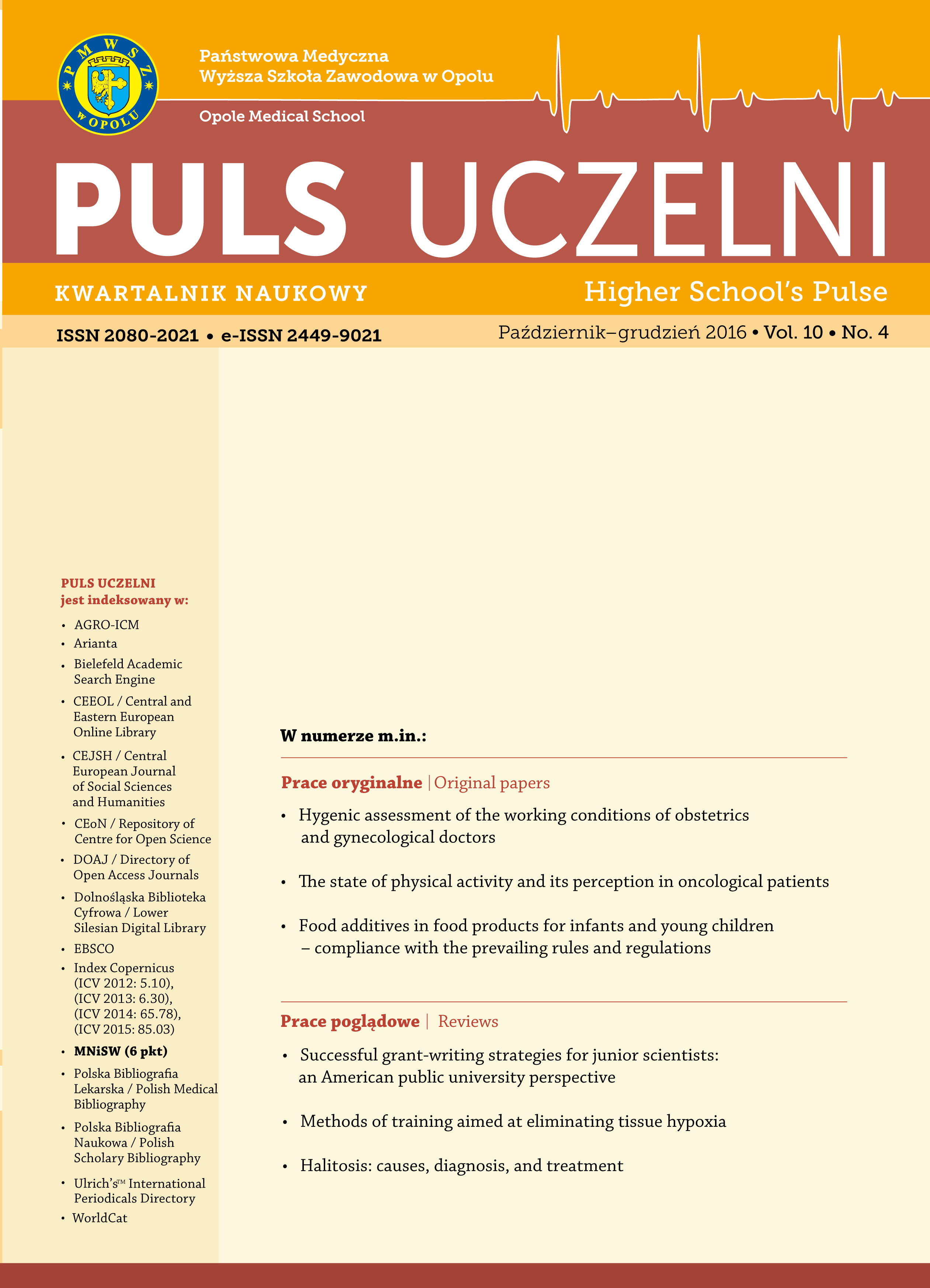Substancje dodatkowe w produktach żywnościowych dla niemowląt i małych dzieci – zgodność z obowiązującym prawodawstwem
Food additives in food products for infants and young children – compliance with the prevailing rules and regulations
Author(s): Teresa Krzyśko-Łupicka, Łukasz Kręcidło, Magdalena KręcidłoSubject(s): Social Sciences, Sociology, Health and medicine and law
Published by: Państwowa Medyczna Wyższa Szkoła Zawodowa w Opolu
Keywords: sociology;health and medicine and law;
Summary/Abstract: Background: Pursuant to Polish law, products for infants and young children constitute a special purpose food group, which is divided into three categories: infant formulae, follow-on formulae, and cereal-based foods and other baby foods. The ingredients lists for each product from every group are regulated by the regulation of the Minister of Public Health of November 22nd 2010.Aim of the study: An analysis of the contents of products for infants and young children commercially available in the Opole region.Material and methods: Food additives in 81 products were analysed, based on the contents provided by the producers. The food additives (categories of preparations) were used in accordance with the regulation on food additives and the regulation on special purpose food groups. However, some banned additives were treated as nutrients and sources of macroelements, in which case they were not listed as food additives.Results: The most commonly used source of calcium were the phosphate and carbonate salts. The hypoallergenic infant formula Nestle NAN 1 HAHA, Nestle NAN 2 HAHA and HUMAMANA 2 HAHA contained the fewest additives. Ready-made meals, which constitute complementary foods, did not contain additives. Drinks and desserts contained only L-ascorbic acid.Conclusions: Regardless of the manufacturer, the analysed products contained only substances which comply with the prevailing Polish and EU law. The least additives were found in modified hypoallergenic milks: Nestle NAN 1 HAHA and NESTESTESTLE NAN 2 HAHA and Humana 2 HAHA. Drinks and dessert jars contained only L-ascorbic acid (E300), and oat cookies for children contained potassium bicarbonate (E501).
Journal: Medical Science Pulse
- Issue Year: 10/2016
- Issue No: 4
- Page Range: 15-20
- Page Count: 6
- Language: English

